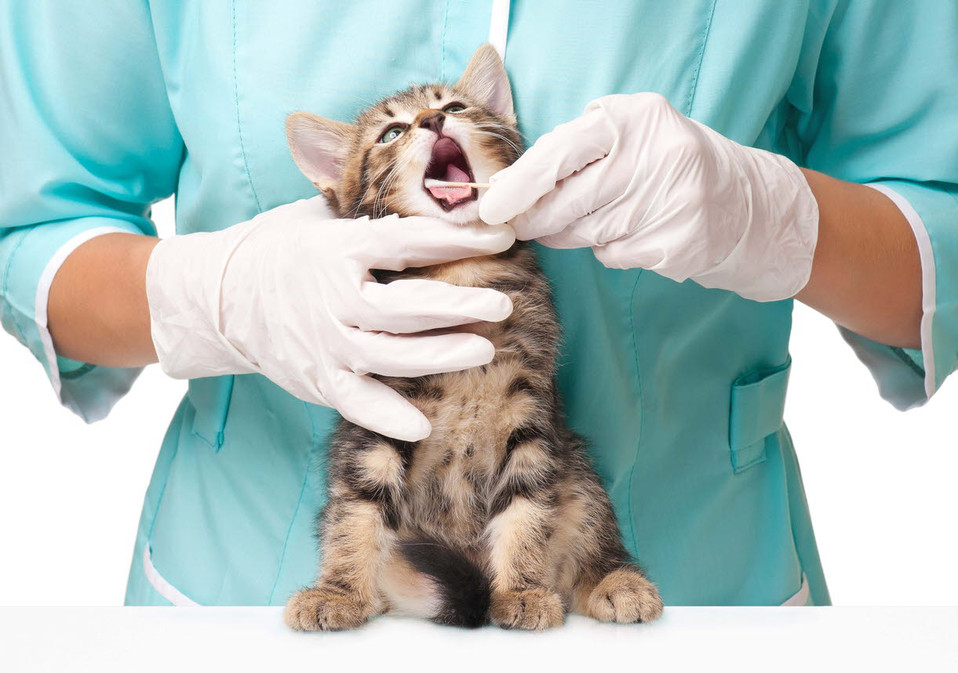Vets warn against lay practitioners and anaesthesia-free dentistry
01 Aug 2019
The Australian Veterinary Association (AVA) is warning pet owners of the health risks posed by lay dental practitioners offering “anaesthesia-free dentistry”. An increasing number of non-veterinary companies are offering cleaning and scaling on conscious pets, but the AVA say the practice does not provide adequate dental care and can be harmful to the animals.
Anaesthesia-free dentistry involves the fully conscious pet being physically restrained so dental instruments, and sometimes power scalers, can be used to remove calculus from the teeth.
Dr Tara Cashman, President of the Australian Veterinary Dental Society says that the term “anaesthesia-free dentistry” is misleading for pet owners as the procedure is purely cosmetic and fails to identify serious problems such as dental disease. Dental disease is common in Australian pets. If untreated, it can be painful and lead to chronic health concerns.
“Cleaning the visible surface above the gum line makes the teeth look superficially clean but will not detect dental disease present below the gum line, and thus provides no medical benefit,” said Dr Cashman.
Dr Cashman says that it is impossible to complete a thorough oral examination including checking every single tooth especially sub-gingivally (below the gum line), the tongue, palate and oropharynx (back of the throat) in a conscious animal.
“It is impossible to do X-rays and adequately examine all surfaces of your pet’s oral cavity while awake. Radiographs and a veterinary oral health evaluation are vital in detecting problems early while they are relatively easy and thus less expensive to treat,” said Dr Cashman.
Anaesthesia-free dentistry also fails to identify another serious dental condition in pets. Occurring below gum level, periodontal disease is an infection that destroys the periodontal ligament anchoring the tooth to the socket. More infection means deeper probing pockets and bone loss. Removing calculus from the crown of the tooth does not address the site of disease formation and is merely window dressing.
“Most lay operators have no animal handling qualifications and are certainly not licensed to diagnose, medicate or radiograph any pet. They may have the best intentions, along with the pet owner to care for the pet’s oral health but anaesthesia-free dentistry is not best practice for the animal,” said Dr Cashman.
But it’s not just dental health that should be concerning pet owners, restraining an animal and forcing it to undergo an uncomfortable procedure over an extended period of time can increase anxiety and make it more difficult for future examinations to occur.
“The animal must be physically restrained, which can lead to significant anxiety. As the animal is conscious, it will be fully aware of any pain involved in the procedure and this can lead to longer-term anxiety and aversion to being touched around the face and muzzle,” said Dr Cashman.
Dental instruments need to be very sharp to debride calculus and plaque from the teeth and could easily injure a handler or patient as the patient moves. Fractious animals may
scratch or bite also. There is no way to protect the airway from aerosolised bacteria or fluids including blood, saliva and scaler coolants further endangering the patient.
Veterinarians can properly examine, diagnose and treat dental disease in pets with a professional veterinary dental cleaning. They will use a general anaesthetic because dental disease occurs above and below the gum line and it ensures they can complete a systematic inspection of every single tooth, probe the pockets surrounding the tooth and check for underlying disease.
The anaesthetic ensures the experience is a positive one for your pet because it is unaware of the pain during the procedure and doesn’t need to be physically restrained.
The Australian Veterinary Dental Society (AVDS) is the special interest group of the Australian Veterinary Association (AVA). Further information on AVDS’s anaesthesia-free dentistry policy is available here.
For further information and requests for interviews contact the AVA media office on 0439 628 898 or media@ava.com.au.
The Australian Veterinary Association (AVA) is the only national association representing veterinarians in Australia. Founded in 1921, the AVA today represents 9000 members working in all areas of animal science, health, and welfare.
